Self-Harm: A Parents' Guide
by Sarah Collins on Feb 16, 2022
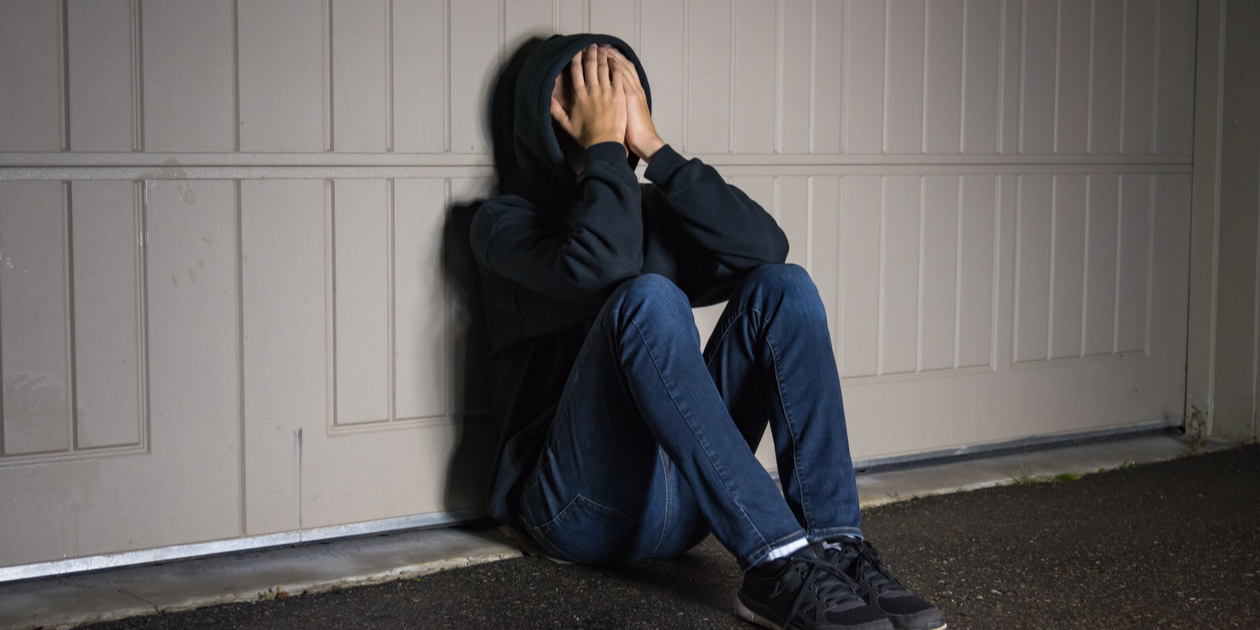
DISCLAIMER: THIS ARTICLE DOES NOT REPRESENT FORMAL MEDICAL ADVICE. IF YOU ARE WORRIED ABOUT YOUR CHILD’S SELF-HARM, CONTACT YOUR GP, NHS 111 OR, IN AN EMERGENCY, ATTEND YOUR LOCAL A&E.
Finding out that your child is ‘self-harming’, can be highly alarming – causing real upset and worry for you and your family. If your child has been struggling with their mental health for some time, finding out that they are self-harming can also lead to feelings of guilt, and panic that things have reached crisis point.
What is self-harm?

Self-harm, sometimes known as ‘self-injury’, refers to an individual hurting themselves on purpose. Some ways that young people might self-harm include:
- Cutting themselves
- Taking too many tablets
- Scratching their skin with their fingernails or a sharp item
- Burning their skin
- Biting themselves
- Hitting or punching themselves, or banging their head or another part of their body on a wall
- Pulling out hair, from their head, eyebrows or eyelashes
How do I know if my child is self-harming?
If you’re worried that your child is self-harming, but they aren’t talking to you about it or showing any visible injuries, it can be difficult to know what's going on. You may notice signs such as:
- Wearing clothes that keep them covered - such as long sleeves and/or trousers, even during hot weather - and becoming comfortable around activities where skin may be visible, such as swimming
- Bloodied tissues in waste bins
- Seeming low, depressed or withdrawn from their family or friends
- Unexplained cuts, bruises or bald patches
However, sometimes there are also no subtle indicators, and your child may present as their usual self outwardly, as they struggle, or don’t feel ready, to communicate what is going on.
Why do young people self-harm?
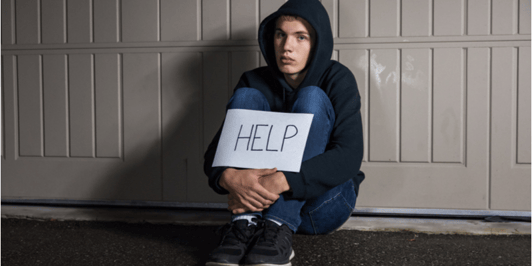
Self-harm is a form of communication that should be noticed with care by the adults around them. It is not a form of ‘attention-seeking’, but rather a message that the young person is going through something which feels too much for them to manage, and they’re trying to find a way to cope. It can, of course, sound counterintuitive to refer to self-harm as a ‘coping strategy’, but it is something that many young people turn to in the moment, in an attempt to find a way to manage their difficult thoughts, feelings, and experiences. Indeed, for some young people, it might feel like their only way to cope. Some young people may only self-harm once or twice, whilst others may self-harm more regularly, and find it hard to stop. It’s important to note that self-harm is not the same as attempted suicide. However, of course some young people who self-harm may also feel suicidal and may harm themselves more seriously as a suicide attempt.
Reasons, why someone may self-harm, could include:
- Seeking control: The sensation of self-harming and experiencing physical pain can feel easier to manage than feeling emotionally out of control.
- Release: A way of physically releasing tension, distress, panic, or other overwhelming feelings which have built up.
- Externalising: Validating their experience by matching their abstract, emotional pain to a physical one.
- Expression: Self-harming can be a way of letting others around them know that they are distressed or not managing (especially if talking is difficult, or perhaps there are communication barriers such as with neurological difficulties or hearing impairment).
- Distraction: Providing something concrete to focus on, to distract away from emotional pain.
- Sensation-seeking: A child might feel emotionally ‘numb’ or ‘zoned out’ (which can be the body’s way of protecting them when they are overwhelmed) and they hurt themselves in order to feel something.
- Punishment: An attempt to punish themselves or others.
- Identity: To identify with a peer group who may also use self-harm.
Sometimes, in the moment, young people might feel that harming themselves has helped. However, afterwards, they may feel guilty or angry that they have self-harmed, or that the effect was only temporary, as their feelings eventually return.
Why haven't they told me?

It is controversial but also important to reflect upon the cultural phenomenon of self-harm, which recent studies have shown has become increasingly widespread among adolescents, in particular at school (Gargiulo, 2020). It can be distressing for some parents to understand that self-harm can, for many young people, be understood as a socially acceptable way of expressing distress, and is a means for having this distress validated. This is, of course, not helped by high thresholds for accessing mental health support within under-resourced services, and a social media generation, where outwardly presenting one’s ‘best self’ is rewarded and real emotions are hidden. This cultural phenomenon can sometimes be hard for parents to understand, because emotions were expressed and managed differently within their generation. This doesn’t negate how seriously self-harm must be taken, but instead highlights the importance of modelling healthy expression and management of emotions at home, and facilitating a safe space where young people can talk openly about what they are going through and how they’re feeling.
How can I help my child?
Finding out your child is self-harming may bring up all kinds of emotions, such as distress, guilt or panic, and leave you not knowing what to say or do. You may feel lost, angry, fearful, anxious or in disbelief. Many parents report feeling like they’ve failed, or they’ve let their child down by not noticing their self-harm, particularly if they found out from someone else, such as a counsellor or a teacher. However, it’s important that parents put these feeling aside, in order to offer their child the best help possible:
Don't blame yourself

If your child hasn’t told you they’re self-harming, this doesn’t mean you’re a bad parent; it may be that your child was trying to protect you from being upset. Mental health difficulties, through their very nature, make people feel alone and isolated, so perhaps they simply found it too hard to reach out.
Stay calm
Your child needs your strength to scaffold them right now and by responding calmly (even if you do not feel that way on the inside) you’ll demonstrate that they can trust you to hold their difficult feelings. Moreover, try to avoid getting angry, upset or blaming your child – this will only serve to show them that they can’t talk to you, or others, for fear of causing upset or burden.
Have brave conversations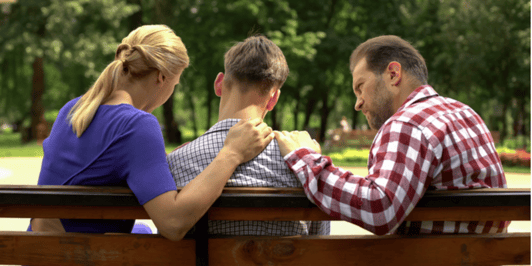
It can be daunting raising the topic of self-harm. Parents often worry that they’re going to give their child ideas, when actually research shows that asking about self-harm or suicidal thoughts does not make them more likely to do it. Talking about it may actually help them to reduce how much they self-harm, as talking may give them some of the release that they’ve been seeking.
If your child does open up, truly listening, without interruption or trying to ‘fix’ how they feel. However, also accept that your child may not want to talk; they may feel vulnerable or unable to explain their distress, or what is causing them to self-harm. Let them know you’re taking it seriously and respond in a non-judgemental, empathetic and caring manner. Explain that you’re aware of the self-harm and that you understand that they are struggling with something right now and need some support. Reassure them that you’re not angry and that you understand that self-harm is helping them to cope.
Advocate for them

Reassure your child that you are going to work together to find a way to support them. This may include letting key people around them know what is going on, such as other parents or caregivers, or a key teacher in school who could provide a listening ear if they’re struggling. However, it’s also essential that you respect their need for confidentiality and sensitivity, and only include people who need to know. Plan together what sources of support they might like to access, such as counselling, visiting their GP or looking at some information from different charities or helplines.
Seek professional help
If your child is self-harming, book an appointment with the GP to get some practical advice. They’ll be able to advise your child on how to self-harm in a way that keeps them safer, for example, how to keep the wounds clean. If your child’s self-harm injuries are severe, consider booking in a regular monitoring appointment with a nurse practitioner at your GP surgery. However, if this does feel necessary, it’s probably time to ask your GP for a referral to professional mental health support, such as CAMHS (Child and Adolescent Mental Health Services).
Come up with a plan to keep them safe
If your child has opened up to you about their self-harm, this is a huge, brave step. As a parent, it can be hard to accept that they may continue to self-harm, but by ‘forbidding’ it or showing disapproval, you may encourage them to hide when they do it. Instead, explain that you’d like to help them stop, but you know for now it’s something they may need to keep doing. Having a plan around how you and they will manage at times they’ve self-harmed, or have the urge to self-harm, will help them to feel safer and more in control. It will also hopefully widen the gap between them having difficult and overwhelming feelings, and acting on them, causing themselves harm.
A safety plan may look something like this:
- Making the home environment safe, such as removing razors, medications or other means of self-harm available in their room and locking them away from around the house.
- Encouraging them to consider ‘positive self-harm’ techniques. These consist of safer alternatives which mimic the sensations or outcomes of self-harm. There are many different alternatives, including clenching or holding ice cubes against the skin until they melt, drawing with red pen on their arm, or pinging elastic bands against their wrist.
- Building a support network around your child. Encourage them to spend time with loved ones, facilitate positive friendships and help them to identify people they know they can turn to when they are struggling.
- Letting your child know they can reach out to you whenever they need to. Check in with them regularly and offer them the chance to talk about how they are feeling whilst you listen. If talking is difficult, consider ways of making reaching out easier, including developing communication systems such as traffic lights, 1-10 number rating systems, or using methods such as texting emoji faces.
- Focus on positive distraction activities, such as going for a walk or other forms of physical exercise. Distraction activities could be reading a book, listening to music, spending time with a pet, taking a relaxing bath, watching a film, focusing on breathing techniques, counting to a set number, writing, drawing what they feel or keeping a diary.
- Developing a ‘Hope Box’ or a collection of things which help the young person to feel positive. This could be photos, memories or compliments they’ve received. This could even be notes they can access on their mobile phone.
- Make sure your child knows websites and helplines they can access in a crisis (see resources below).
It may take some time, but with practice - and lots of support and encouragement - young people can usually develop more positive ways of coping.
Next steps

A helpful solution in the longer-term is for your child to have a safe space, away from what is going on for them. This will help them to make sense of how they are feeling, explore why they’ve turned to self-harm and develop healthier ways of coping. If you feel your child would benefit from professional support, it may be helpful to consider online counselling with Mable Therapy. Our therapists understand that self-harm is a language, albeit a distressing one, and will work to give your child the safe and confidential space they need to manage and make sense of themselves. If you would like some more information on the support we can offer, please get in touch .
Further resources
Information and support for young people:
- Childline (Website: https://www.childline.org.uk/info-advice/your-feelings/self-harm/; Tel: 0800 1111)
- Papyrus (Website: www.papyrus-uk.org; Tel: 0800 068 4141)
- Young Minds (Website: www.youngminds.org.uk)
- Samaritans (Website: www.samaritans.org; Tel: 116 123)
- Harmless (Website: www.harmless.org.uk)
- National self-harm network (Website: www.nshn.co.uk)
Resources for parents:
- Coping with self-harm: a guide for parents and carers – available for free download from: https://www.psych.ox.ac.uk/files/news/copy_of_coping-with-self-harm-brochure_final_copyright.pdf.
- Healthtalk.org module on parents’ experiences of self-harm: https://healthtalk.org/self-harm-parents-experiences/overview
- No Harm Done (information for school staff and parents): www.cwmt.org.uk/resource
- Royal College of Psychiatrists: https://www.rcpsych.ac.uk/mental-health/problems-disorders/self-harm
- The Parent’s Guide to Self-Harm by Jane Smith, Oxford: Lion Hudson
Resources for schools:
- Building suicide-safer schools and colleges: a guide for teachers and staff: https://www.papyrus-uk.org/save-the-class/#:~:text=PAPYRUS%20has%20developed%20a%20guide,may%20be%20having%20suicidal%20thoughts
- Some authorities have guidelines for school staff on self-harm, for example, Self-harm: Guidelines for Staff within School and Residential Settings in Oxfordshire, obtainable through the Oxfordshire Safeguarding Children Board: https://schools.oxfordshire.gov.uk/cms/sites/schools/files/folders/folders/documents/SEN/guidance/Self_Harm_Guidelines.pdf
- General mental health (36)
- General Speech & Language (31)
- Primary Schools (25)
- School Issues (25)
- Classroom Behaviour (24)
- Counselling (24)
- Anxiety (22)
- Absenteeism (21)
- Speech and Language Therapy (21)
- SENCOs (19)
- Safeguarding (18)
- Secondary & Sixth Form Schools (17)
- Social Communication (17)
- Funding (15)
- MATs (15)
- Generalised anxiety (14)
- Autism Support (11)
- Language Delay/Disorder (11)
- SEMH (11)
- Relationship Issues (10)
- AAC (7)
- ADHD Support (7)
- Speech Sounds (7)
- Autism (5)
- Hearing Impairment (5)
- Depression (4)
- Selective Mutism (4)
- Anger (3)
- Cleft Lip/Palate (3)
- Downs Syndrome (2)
- Phobias (2)
- Stammering (2)
- Loss (1)
- Self-Harm (1)
- Suicidal Thoughts (1)
You may also like
These related stories
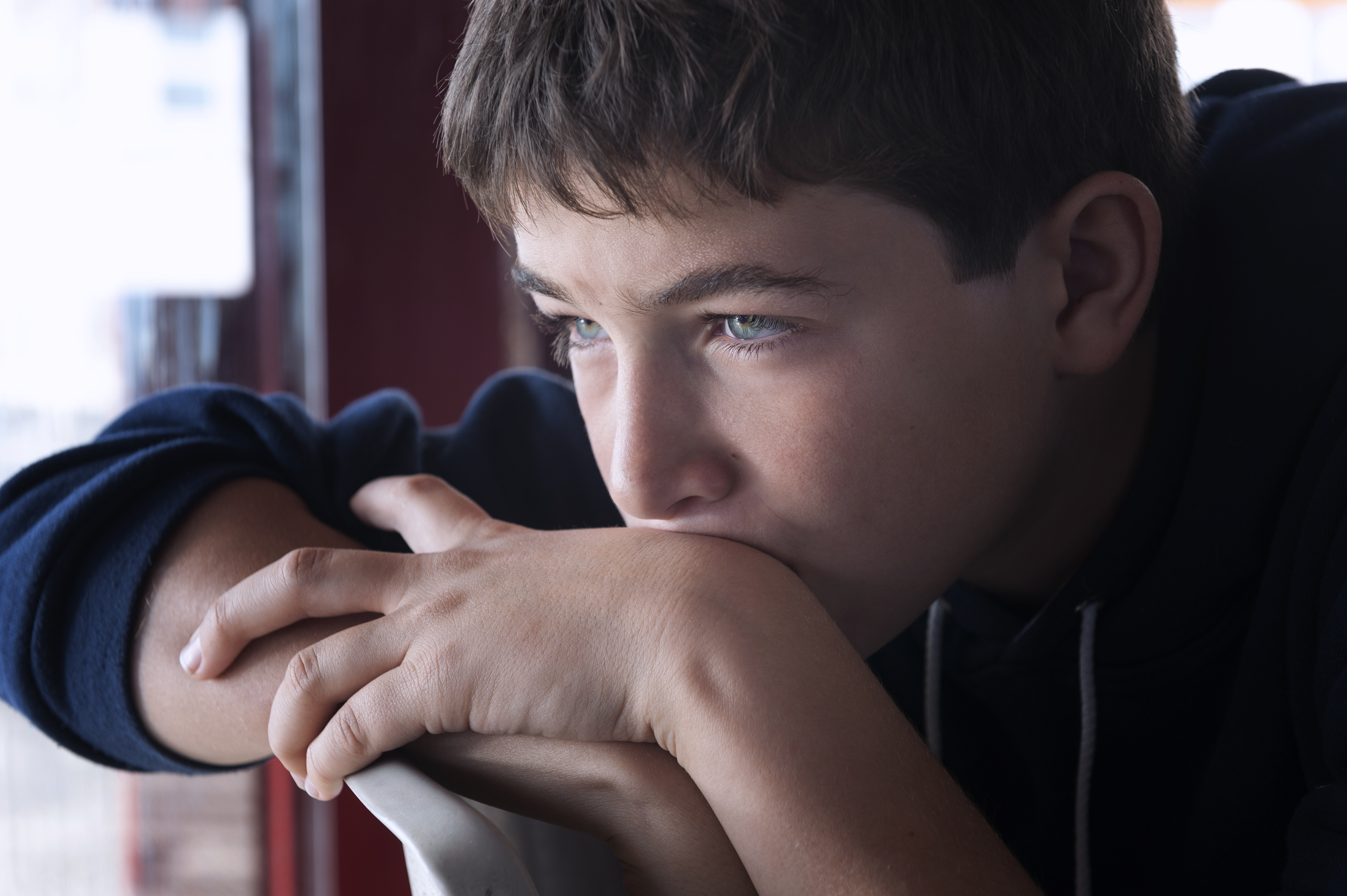
How to help a child overcome social anxiety
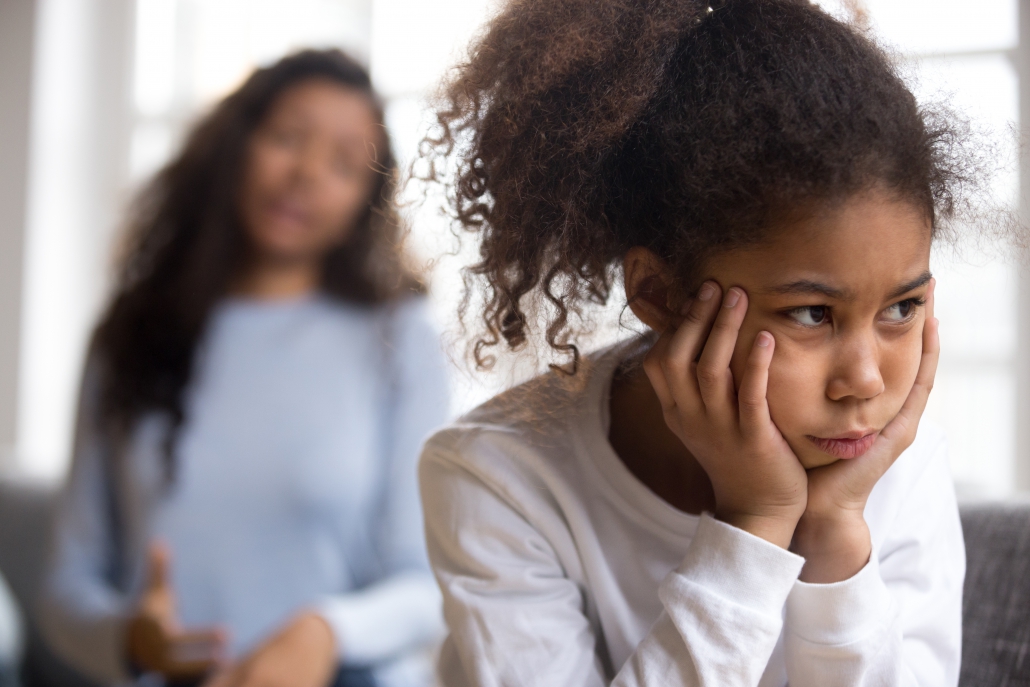
Why is my child so angry? The lockdown effect.
